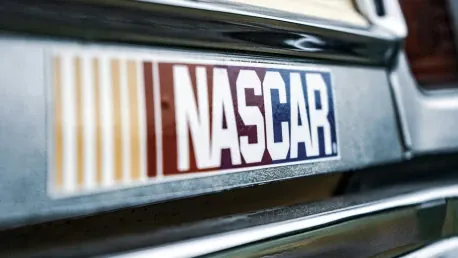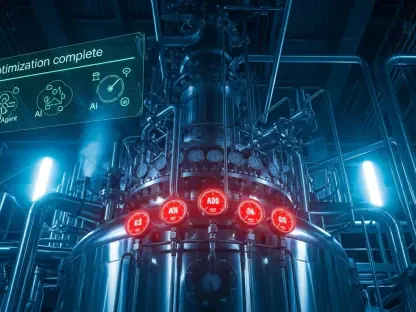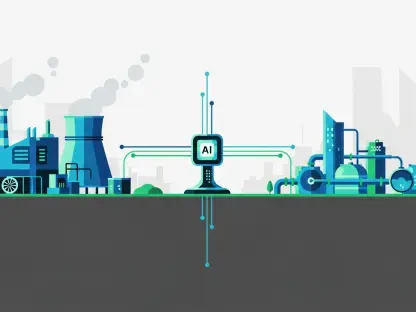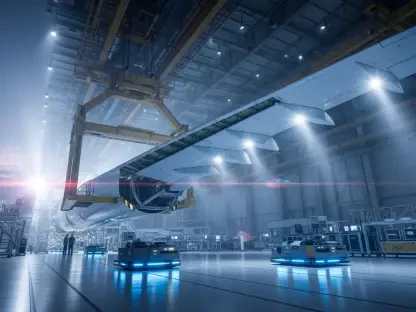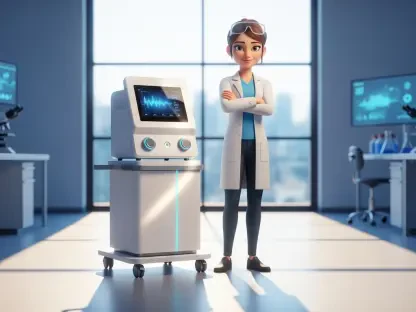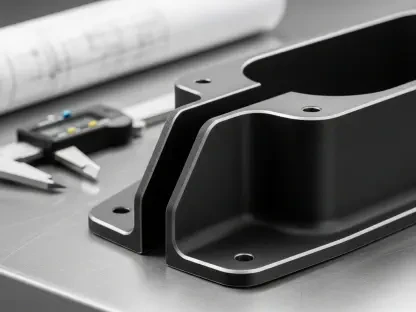The recent announcement of Stratasys Ltd. becoming the official 3D printing partner of NASCAR marks a significant milestone in the integration of advanced manufacturing technologies in motorsports. This multi-year agreement is set to transform the way NASCAR designs, develops, and manufactures various parts and tools, enhancing both performance and safety in the sport. With Stratasys providing advanced 3D printing technology, NASCAR’s operations are on the brink of entering a new era of innovation and efficiency.
The Partnership Between Stratasys and NASCAR
Stratasys as the Exclusive 3D Printing Provider
Stratasys Ltd., a leader in the 3D printing industry, has entered into a long-term technical partnership with NASCAR. This collaboration will see Stratasys providing advanced 3D printing technology for the design and production of parts and tools across NASCAR’s operations. Previously, NASCAR utilized a combination of technologies, including those from Stratasys. However, with this new agreement, Stratasys’ technology will now be the sole solution employed for these purposes. This partnership marks a significant shift in NASCAR’s approach to manufacturing, positioning Stratasys as a key player in motorsports innovation.
One of the driving forces behind this collaboration is the potential for 3D printing to streamline and enhance NASCAR’s production processes. By relying exclusively on Stratasys’ technology, NASCAR will be able to integrate more efficient production methods, reduce lead times, and achieve higher precision in parts manufacturing. This partnership is not only about leveraging Stratasys’ existing technology but also about fostering an environment of continuous improvement and innovation. The technology provided by Stratasys is expected to enable NASCAR to develop and test new designs more rapidly, bringing cutting-edge advancements to the track at an unprecedented pace.
Establishment of a State-of-the-Art 3D Printing Lab
One of the key highlights of this partnership is the establishment of a new, state-of-the-art 3D printing lab at NASCAR’s Research & Development Center in Concord, North Carolina. This facility is equipped with multiple Stratasys technologies, including the F370, 450mc, and F900 FDM printers, as well as the NEO800 stereolithography (SL) printer. These advanced machines will support various functions such as research and development, parts production, and tooling for NASCAR’s three national series. The creation of this cutting-edge lab signifies a major investment in the future of sports engineering.
The new 3D printing lab is expected to be a game-changer for NASCAR’s engineers. With access to top-of-the-line 3D printing equipment, the R&D team will have the tools needed to experiment with new materials, prototype innovative designs, and produce custom parts on-demand. This capability is particularly crucial in the highly competitive environment of NASCAR, where performance improvements need to be implemented swiftly to maintain a competitive edge. The lab will also serve as a testing ground for integrating more advanced 3D printing techniques into NASCAR’s broader manufacturing processes, ensuring that the sport remains at the forefront of technological advancement.
Enhancing Performance and Safety
Faster Design Cycles and On-Demand Production
The implementation of Stratasys’ technologies is expected to significantly benefit NASCAR engineers by providing the agility needed for faster design cycles and on-demand production of custom components. John Probst, the Executive Vice President and Chief Racing Development Officer at NASCAR, emphasized that partnering with Stratasys will enable NASCAR to push the boundaries of performance and accuracy in ways that were not previously possible. This level of customization and rapid iteration is crucial for improving vehicle performance and ensuring driver safety.
Historically, traditional manufacturing methods have involved lengthy production cycles and high costs, particularly when creating complex or highly specialized components. Stratasys’ 3D printing solutions effectively address these challenges by allowing NASCAR to produce intricate parts quickly and cost-effectively. This capability reduces the time from design to implementation, enabling NASCAR teams to test and refine their designs more frequently. This rapid prototyping and production ability is integral to NASCAR’s strategy to stay ahead in a sport where milliseconds can make the difference between victory and defeat.
Optimizing Components for Competitive Edge
Stratasys’ 3D printing technology will allow NASCAR to quickly iterate and optimize components, ensuring that their teams have the best possible equipment to maintain a competitive edge in this high-stakes environment. Probst’s statements underline the value that Stratasys has already brought to NASCAR and the sport’s commitment to staying at the forefront of innovation. By utilizing 3D printing, NASCAR can experiment with new design geometries and materials that were previously impractical or impossible to produce using conventional methods.
The ability to rapidly prototype and test components means that NASCAR teams can make more informed decisions about the materials and designs that offer the greatest performance benefits. This iterative process allows for fine-tuning of components to achieve optimal performance characteristics, such as weight reduction, increased durability, or improved aerodynamics. Stratasys’ technology thus provides NASCAR with a significant competitive advantage, enabling teams to continually enhance their vehicles and adapt to the ever-evolving demands of motorsport competition.
Expanding 3D Printing Capabilities
Increased FDM Capabilities
The expanded partnership will also see an increase in the existing FDM (Fused Deposition Modeling) capabilities within the NASCAR R&D center, allowing for the production of larger-scale parts. This enhancement will provide NASCAR with the ability to produce more complex and larger components, further pushing the limits of what is possible in motorsports engineering. The advanced FDM printers, such as the F900, are designed to handle larger build volumes and more demanding applications, making them ideal for creating robust, high-performance parts.
By expanding their FDM capabilities, NASCAR can explore new applications for 3D printing in their vehicles. Larger and more complex parts, which were previously challenging to produce, can now be created with greater ease and precision. This capability opens up new possibilities for innovation, such as integrating multiple functions into a single part or reducing the number of components needed for a particular application. This expanded capability will not only enhance the performance of NASCAR vehicles but also drive efficiency in the manufacturing process, reducing waste and lowering overall production costs.
Integration of Stereolithography Technology
Furthermore, the integration of Stratasys NEO® stereolithography (SL) technology will support a variety of applications, from aerodynamic testing and prototyping to the production of high-precision tooling parts. This will further enhance the design and manufacturing flexibility that 3D printing brings to NASCAR, enabling more innovative and efficient solutions. Stereolithography, known for its ability to produce highly detailed and accurate parts, is particularly useful for creating complex geometries and fine features, which are crucial in motorsport applications.
The addition of stereolithography technology to NASCAR’s R&D capabilities allows engineers to produce parts with exceptional surface finish and precision. This level of detail is essential for components that play a critical role in vehicle performance, such as aerodynamic elements and highly stressed engine parts. By leveraging SL technology, NASCAR can conduct more rigorous testing and validation of their designs, ensuring that every part meets the highest standards of quality and performance. This integration exemplifies the commitment to continuous improvement and innovation that defines this partnership.
Practical Applications in NASCAR
3D Printed Parts in NASCAR Cup Series Cars
Practical applications of this partnership are already evident. Engineers at NASCAR have collaborated with Stratasys on solutions for NASCAR Cup Series cars. Currently, every vehicle on the track utilizes 3D printed parts. For instance, Stratasys Direct Manufacturing produced a cold air inlet vent using the ###50 SAF printer and plant-based Nylon11 material. This vent, located at the top center of the windshield, forces air into the car to cool the driver. This collaboration highlights the tangible benefits of 3D printing in enhancing the performance and safety of NASCAR vehicles.
This vent solution showcases how 3D printing can address specific engineering challenges with custom-designed components. By using the ###50 SAF printer and advanced materials like plant-based Nylon11, NASCAR can produce parts that are not only lightweight and durable but also environmentally friendly. The ability to tailor parts to exact specifications allows engineers to optimize their performance for particular applications, such as improving driver comfort and safety by enhancing ventilation. This example underscores the transformative potential of 3D printing in revolutionizing car design and function.
Production of NACA Ducts
Additionally, FDM printers at the NASCAR R&D Center use ULTEM® 9085 black material to produce a NACA duct on the lower engine panel, which helps vent hot air from the engine bay. These practical applications demonstrate the immediate impact of Stratasys’ technology on improving the performance and safety of NASCAR vehicles. The use of ULTEM® 9085, a high-performance thermoplastic, ensures that the ducts can withstand the extreme conditions of motorsport racing while delivering reliable performance.
NACA ducts are an excellent example of how 3D printing can contribute to more effective thermal management in high-performance vehicles. By efficiently directing airflow to critical areas, these ducts help maintain optimal operating temperatures, preventing overheating and ensuring consistent engine performance. The ability to quickly produce and test different duct designs allows NASCAR engineers to fine-tune their vehicles’ thermal management systems, leading to better overall performance and reliability on the track. This practical application highlights the critical role that Stratasys’ technology plays in enhancing the capabilities of NASCAR teams.
Broader Impact on the Automotive Industry
Innovation in High-Performance Environments
Rich Garrity, Chief Business Unit Officer at Stratasys, highlighted that their partnership with NASCAR exemplifies the distinctive advantages of 3D printing in motorsports. From the on-demand manufacture of custom components to shortening the design cycle, Stratasys is aiding NASCAR in achieving faster production times and improved part performance. The high-stakes environment of NASCAR serves as a proving ground for cutting-edge 3D printing technologies, demonstrating their potential to revolutionize other industries.
The lessons learned from deploying 3D printing in the demanding context of motorsports can be applied to a wide range of high-performance environments. The ability to rapidly produce complex parts with high precision and tailored material properties offers significant advantages in industries such as aerospace, defense, and medical devices. Stratasys’ success in NASCAR underscores the broader applicability of 3D printing technology in creating custom solutions that meet the stringent requirements of various critical applications. This innovative spirit drives advancements not just in motorsports but across diverse sectors that demand the highest levels of performance and reliability.
Influence on Commercial Vehicle Production
Stratasys Ltd. has recently been named the official 3D printing partner of NASCAR, marking a pivotal moment in the intersection of advanced manufacturing and motorsports. This multi-year partnership is poised to revolutionize how NASCAR designs, develops, and creates various parts and tools. The advanced technology provided by Stratasys will significantly enhance both the performance and safety aspects of the sport.
The agreement between Stratasys and NASCAR signifies a major leap forward, ushering in a new era of innovation and efficiency for the motorsport industry. 3D printing technology allows for rapid prototyping and the production of complex parts with unparalleled precision. This will enable NASCAR teams to test and implement new designs more quickly and effectively than ever before. Moreover, the ability to manufacture customized components on-demand will streamline the supply chain, reducing delays and costs associated with traditional manufacturing methods.
In summary, the collaboration between Stratasys and NASCAR promises to bring about significant advancements in motorsport engineering, ultimately benefiting teams, drivers, and fans alike.
